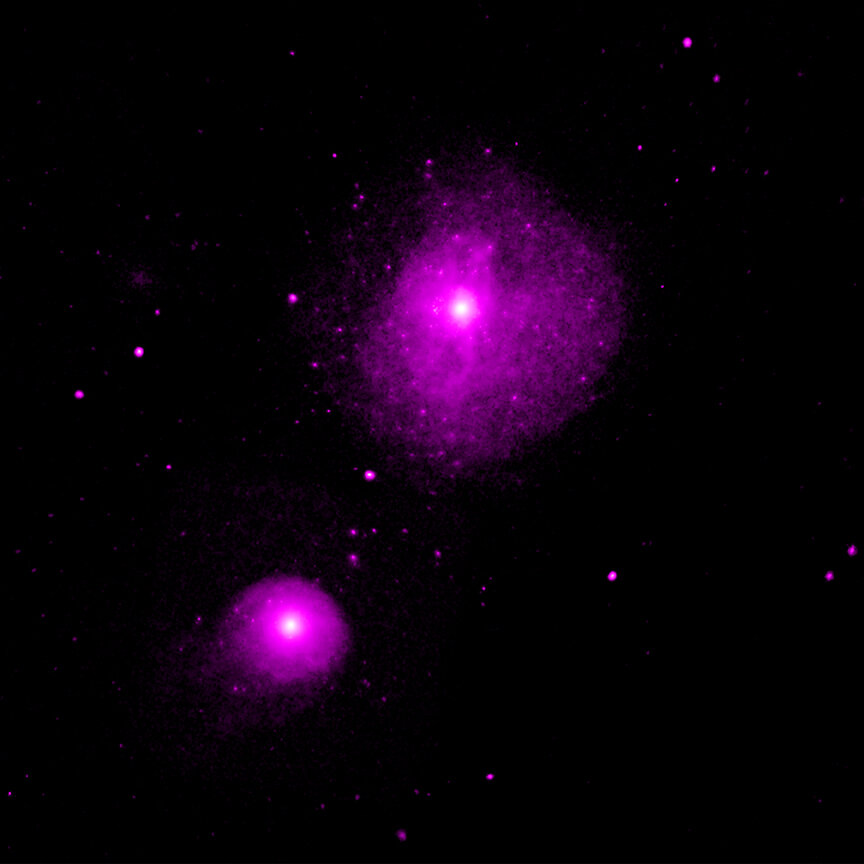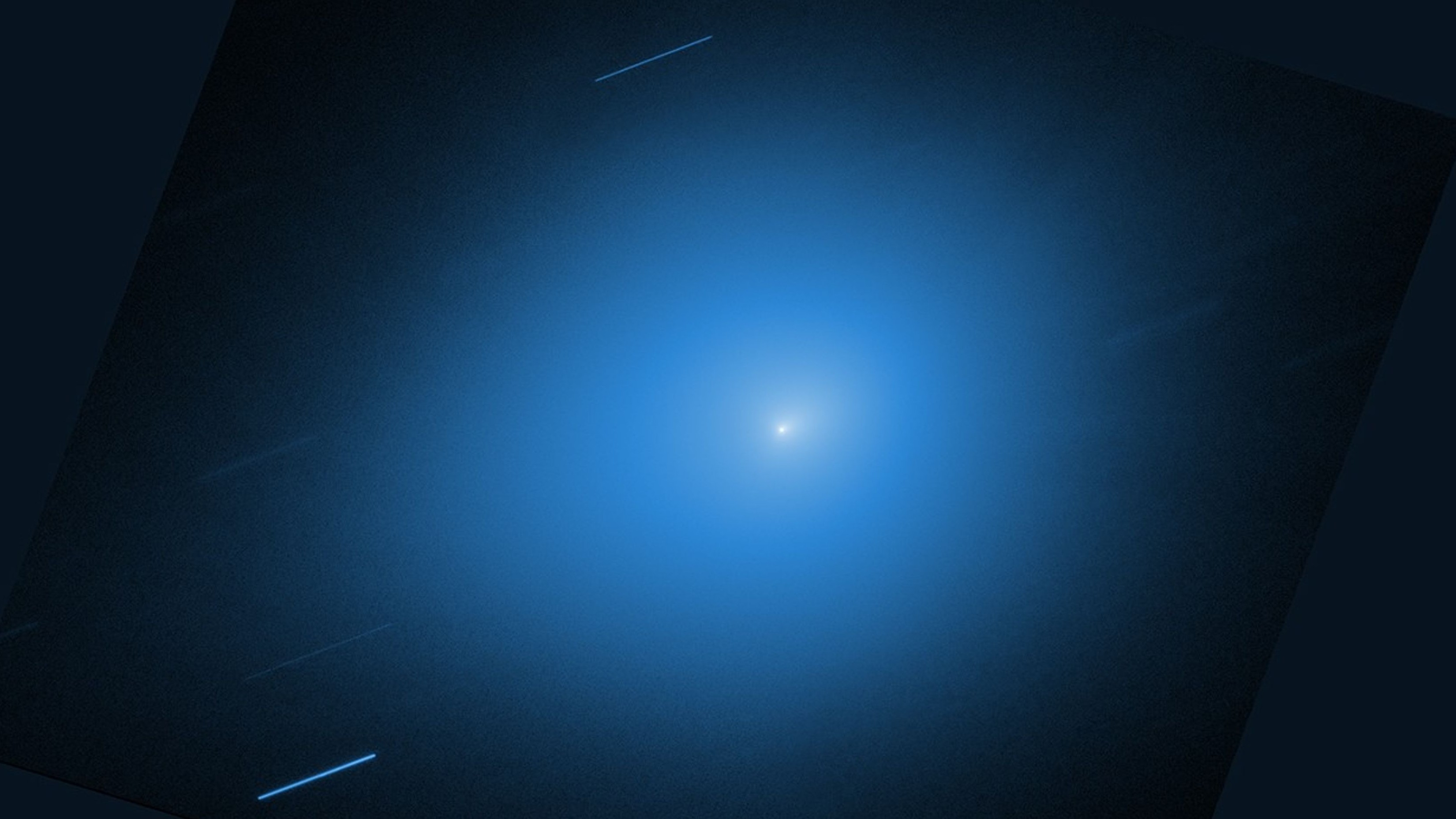30 'Homeless' Binary Stars Spotted Drifting in the Void Outside Any Known Galaxy

When two stars love each other (and are sufficiently massive and sufficiently close in space), they might start going steady. Astronomers call these stellar partners binary star systems, because the smitten suns do everything together. They orbit around each other, pool their gases together and sometimes even come back from the dead together.
It's a beautiful thing — but it's not always good times. Sometimes, one member of a binary duo can be punished for its partner's toxic behavior. Take the 30-or-so binary star systems recently detected near a galaxy cluster 62 million light-years from Earth. According to a study published May 2 in The Astrophysical Journal, these lonesome pairs got kicked out of their home galaxies when one member of the partnership suddenly went off the rails, collapsed into a neutron star and created a blast so powerful that it sent both binary partners careening into interstellar space.
"It's like a guest that's asked to leave a party with a rowdy friend," lead study author Xiangyu Jin, of McGill University in Montreal, said in a statement. "The companion star in this situation is dragged out of the galaxy simply because it's in orbit with the star that went supernova." [15 Amazing Images of Stars]
Jin and his colleagues discovered these stellar exiles while studying 15 years of X-ray emission data collected by NASA's Chandra X-ray Observatory (a powerful X-ray telescope mounted on a satellite). The team zoomed in on the Fornax cluster, a group of more than 50 known galaxies located in the constellation Fornax (Latin for "furnace"). Certain emission patterns told the story of binary star systems where one partner had collapsed into a neutron star, sucked loads of gas and dust from its partner star into an orbiting disk and then superheated that disk, to tens of millions of degrees.
Those hot, hot disks were visible only in X-ray light, the researchers said, and about 30 of the X-ray signatures detected came from outside the bounds of any known galaxy. The team concluded that these glowing systems were most likely a pair of one neutron and one non-neutron star that had been catapulted out of their home galaxy when the neutron star went supernova and collapsed.
Thirty pairs of homeless stars might seem like a lot, but there are probably countless others just in the narrow patch of sky that the researchers were looking at, the team wrote. The researchers detected nearly 200 peculiar sources of X-ray emissions in Fornax, but many of them were just too far away to be resolved.
- The 12 Strangest Objects in the Universe
- 9 Strange Excuses for Why We Haven't Met Aliens Yet
- 11 Fascinating Facts About Our Milky Way Galaxy
Originally published on Live Science.
Get the world’s most fascinating discoveries delivered straight to your inbox.

Brandon is the space / physics editor at Live Science. With more than 20 years of editorial experience, his writing has appeared in The Washington Post, Reader's Digest, CBS.com, the Richard Dawkins Foundation website and other outlets. He holds a bachelor's degree in creative writing from the University of Arizona, with minors in journalism and media arts. His interests include black holes, asteroids and comets, and the search for extraterrestrial life.


